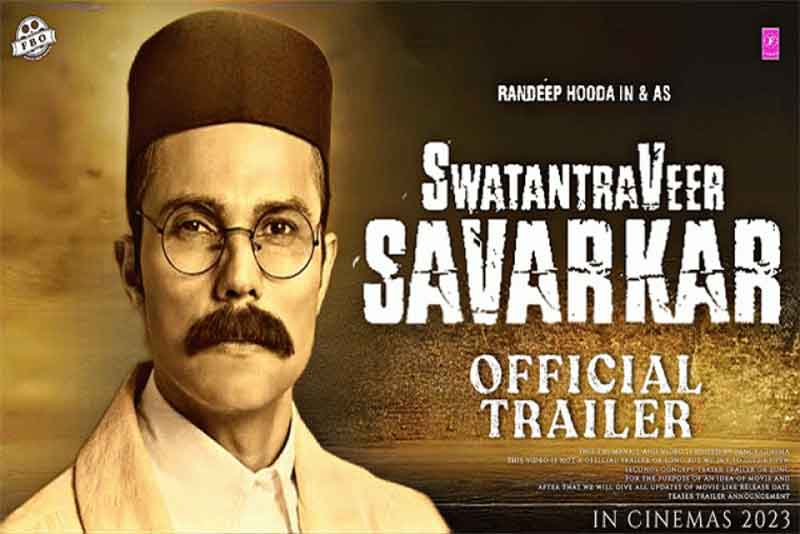
Recently the movie ‘Pathan’ was in the news primarily for two reasons. One was around being its supposed anti-Hindu content for usage of saffron colour in a song scene and two in the past Shahrukh Khan had made a statement about growing intolerance in the country referring to increasing incidents of lynchings. The fact that he belongs to a minority and his statement referring to lynchings has not been liked by saffron supporters. Hence the ‘Boycott gang’ an extension of RSS inspired groups started call for boycott of the movie Pathan. In the recent past it had given a similar call for the movies ‘Shamshera’, ‘Brahmastra’ and ‘Lal Singh Chadda’ as it considered either the actors in it anti-Hindu or a specific scene or character in the film anti-Hindu. In this scenario, the success of the movie ‘Pathan’ provides relief to those who want India to remain secular and inclusive. It is said to have made about close to Three hundred crores during its four days of release.
Pathan may not necessarily be the best of movies. Its content too is the kind of patriotism normally depicted in any other film with anti-Pakistan angle built into it and possibly also seems to be fine with removal of Article 370 as the film is around the period after its removal. Its depiction of nationalism is not necessarily the kind which stands for progressive values. It does not go into the question of what ‘patriotism’ means and the question of ‘progressive nationalism’. It is a spy story, and the central character takes on a specific plan of the neighbouring country to destroy India. Hence this is in line with other films displaying similar forms of patriotism.
The success of the movie Pathan still matters for the following reasons: –
Rejection of Boycott gang: ‘India against Bollywood’ and ‘Boycott Bollywood’ trends started by the Sanghi propaganda wing propagates that Bollywood is largely captured by those who are anti-Hindu and carry out anti-Hindu agenda in its films whether it be the actors, directors, musicians, lyricists etc. And that it shows Hindu culture, Hindu sentiments, Hindu symbols in a bad light and hence a need to clean up Bollywood from its anti-Hindu content. And hence to boycott films that are anti-Hindu including the movie Pathan. The success of the movie shows that the Boycott agenda has been rejected and there has been overwhelming response for the film. And people do not necessarily believe that it is anti-Hindu.
Rejection of Exclusion agenda: One of the saffron agendas has been to clean up film spaces in Bollywood which has any remnants of minority. It could be to make it free from individuals ‘Khans’, ‘Akhtars’, ‘Jaffreys’, ‘Mehmoods’, ‘Hussains’ and ‘Rehmans’. It is also to make it free from influence of Urdu in lyrics, songs etc. Contribution of Muslims to Indian film Industry has been huge as actors, lyricists, singers etc. Many a times Hindu devotional songs has been written and sung by Muslim artists. Without appreciating the same, the saffron wing wants to exclude minorities from the film world to the extent that they do not even want characters, scenes which depict minorities. The success of this film shows that persons belonging to the minorities continue to be accepted as central actors and characters in the film. What it sought to exclude by propaganda, the success shows that they continue to be accepted as integral to the film world.
Rejection of hate: The success of the film shows that hate agenda propagated by the saffron gang has been rejected. ‘Khans’ continues to be loved and accepted by the larger masses of Indians. And that Indians are hardly bothered by the ‘identities’ of persons for showering love. Despite efforts to cultivate ‘Hindu-Muslim’ lens among the people, people are willing to look and think beyond it.
Rejection that minority and patriotism cannot go together: The saffron propaganda wing had sought to build the idea that only majority could be patriotic and the ones who belong to the minority can never be patriotic. The movie tries to show that protagonist and actor belonging to the minority can be patriotic and thus delinks patriotism from one’s religious identity. Hence represents a rejection of the idea of patriotism around one’s identity.
Rejection of the idea of no central character of Muslims: The movie signifies a return of the Muslim to the mainstream cinema space. Much of the central characters in films usually tend to be those belonging to the majority. Even the role played by ‘Khans’ has been mostly with the name ‘Raj’ a Hindu character. The movie shows that Muslims as central character of the film can be accepted.
The success of the movie needs to be celebrated at a time when anti-minority hate agenda is being accelerated. The film is being treated as a festive event with crowds dancing to the tunes. This counters the polarising agenda. However, patriotism as depicted in this or other movies can still be debated upon. Can patriotism be more broadened?
T Navin is an independent writer
















































